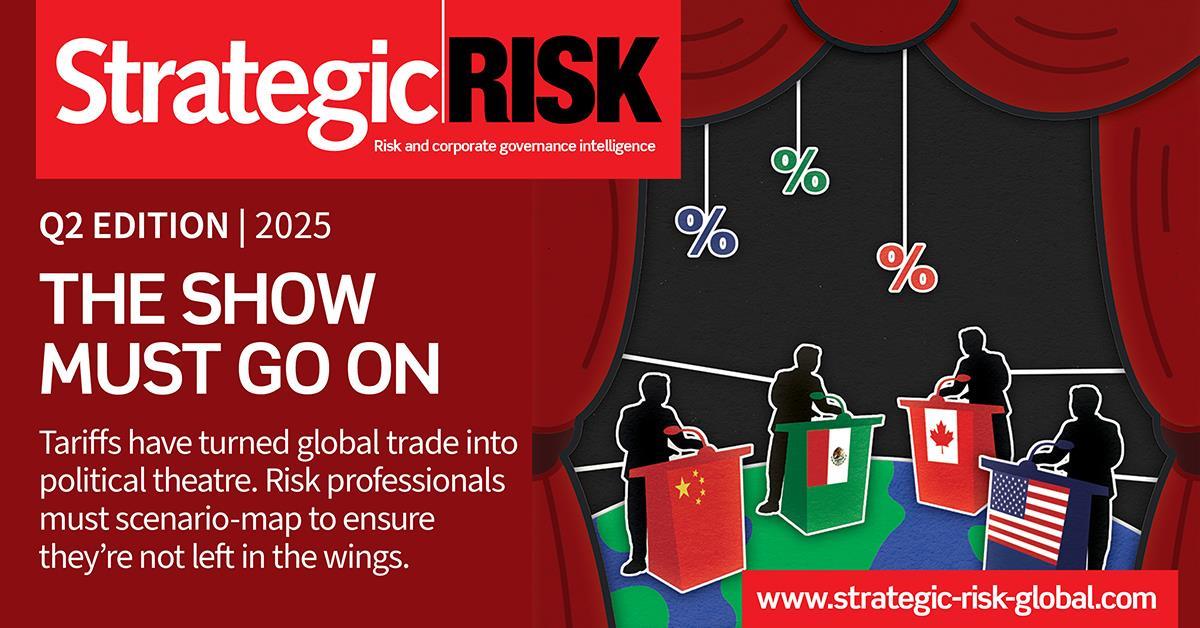European companies frequently look to deals with US businesses to access this potentially valuable market. Don’t leave your IP risks unprotected, warns Michael Rossi
Companies have to address many issues when managing their intellectual property (IP) - including how to recognise it, how to value it, how to exploit it, and how to protect it. However, one consideration that is just as important but often overlooked is the role that insurance should play in connection with IP. And what should that role be when doing business internationally, especially with a US-based company?
If you are interested in opening up operations in the US, don’t assume that insuring IP risks there is the same as insuring such risks in Europe. Similarly, if you want to join forces with a US-based company in a partnership, joint venture, strategic alliance or other venture, take account of the insurance issues. If you accept responsibility for insuring the venture, you need to understand the US IP risk insurance scene. If the other party accepts responsibility for insuring, check that its cover is adequate. These issues are relevant whether the risk comes from a third party, or from the other party itself (eg misappropriation of IP by the other party).
If you are interested in buying a company based in the US, you also need to understand IP risk due diligence issues, and how insurance can protect against certain claims occurring in respect of mergers and acquisitions (M&A). For example, more and more companies are turning to some form of M&A insurance to avoid the adverse consequences of third-party claims made against them after they have bought a company, especially claims brought by one or more of the seller’s competitors. Such claims have increased alarmingly in the US, and insurance can be vital in addressing the risk. M&A insurance is also playing an important role in transactions between European-based companies.
Risks at issue
It is important to differentiate between first-party risk and third-party liability risk. First-party risk denotes loss that you sustain directly. Third-party liability risk denotes loss brought on by claims made against you by third parties.
There are two important first-party risk exposures in respect of IP risks. The first involves losses sustained because an employee or third party misappropriates your IP and sells it to one of your competitors. This can produce several types of losses.
The second important first-party risk involves the cost of enforcement actions to stop another party from using your IP. For example, if you believe that another company is infringing your patent, you can sue, seeking an order to enjoin it from making or selling the allegedly infringing product. Such lawsuits are not cheap. And, if you lose, you then face another type of first-party loss – lost sales to your competitor.
The array of third-party liability IP infringements risks is broad. In addition to the usual suspects, such as claims for infringement of patent, copyright and trademark, there are any number of claims that can fall within the spectrum of IP infringement. Those that seem to be attracting most attention are claims for misappropriation of confidential or proprietary information, misappropriation of trade secrets and unfair competition.
Insurance issues
Other than for the costs of enforcement actions, finding adequate coverage in traditional insurance programmes for the first-party risks described has been difficult. Companies typically look to commercial property and crime policies, but insurers have vigorously resisted paying such claims under these policies. In any event coverage has been found to be inadequate. Even where insurers expressly cover first-party risks in new, stand-alone e-commerce policies, such coverage is very limited.
This means that if you are interested in entering into a partnership, joint venture or strategic alliance, you must practise good risk management over your IP. Techniques include making an informed decision on how much IP you will share with the other party, drafting rock-solid agreements about it (who owns it, how it can be used, how will it be given back), and monitoring the dissemination of information, from the creation of the venture to its winding up.
There are policies available for insuring the costs of enforcement actions in the US. However, the product does not appear to have gained a wide market, at least when it comes to the buying habits of large, multinational companies.
The state of affairs as far as insuring IP infringement liability risks in the US goes is, quite frankly, a mess. Coverage for claims alleging IP infringement may be found in any number of policies in a company’s programme. But trying to create a cohesive insurance programme that covers all of a company’s third-party liability IP risks is anything but easy, given the patchwork of solutions available.
About the only thing that can be said with certainty is that a US-based company will have one or more of the following policies:
M&As
It is worth remembering that the US is experiencing an explosion in IP claims following announcements of M&As by deep-pocket buyers. Competitors of the target company seem to materialise from nowhere to sue the buyers, alleging any number of claims. Misappropriation or infringement of confidential or proprietary information, trade secrets, patent and copyright are top of the list. There are also claims which allege corporate raiding of employees and unfair competition.
If you are buying a US-based company there are several ways of protecting yourself. For example, if the seller can represent/warrant that it has not infringed any other party’s IP rights, then you can buy insurance to cover the risk of loss arising from a breach of that representation/warranty. If one or more claims of infringement are already outstanding against the target company, you can buy insurance to cover the full ramifications of such a known but as yet unquantified loss.
The names of the standard insurance products available in Europe and the US vary, but they include: representation and warranty insurance; warranty and indemnity insurance, loss mitigation insurance and the like. There also are IP infringement policies that can be amended to insure IP risks associated with M&As.
You can structure such insurance solutions in a variety of ways. For example, the seller may be named as the insured, with the policy acting as liability insurance. If an IP infringement claim arises after the transaction, you claim against the seller for breach of representation or warranty, and the insurance will cover the seller’s indemnity obligations.
Alternatively, you can set up the policy with yourself as the insured. Here, the insurance acts as a hybrid first-party and third-party liability policy. If an IP infringement claim arises after the transaction, you can claim against the policy in response. It will cover the losses that you sustain as a result (not only in responding to the third-party claim, but also the first-party loss you suffer by reason of the seller’s breach of representation or warranty).
More and more companies are using such solutions. Some buy insurance to prevent a deal from stalling. Insurance removes the issue of the risk of IP-related loss from the negotiating table, so that the parties no longer have to fight about it. The insurer assumes the risk, other than for the premium and self-insured retention of the policy, which can be factored into the deal negotiations.
Where M&A insurance is used like this, typically both parties know about the cover. However, sometimes a party to a transaction will use insurance without the other party knowing. It may agree to assume the IP risk, in exchange for a major change in the purchase price, or some other big concession. It then then off-loads the risk to an insurer. For example, a seller may agree to assume the IP risk in exchange for an increase in purchase price of US$10m, and then buy a policy with a $1m retention for $500,000 of premium. As far as the seller is concerned, it will receive an additional US$8.5m value from the deal by using insurance.
Don’t take IP insurance issues for granted when doing business internationally. Not only can insurance mitigate an otherwise problematic IP-related loss or claim, but you can also use it to facilitate the partnerships, joint ventures, strategic alliances and M&As that are part and parcel of expansion.
Michael Rossi is president of Insurance Law Group, Inc., a Los Angeles firm providing legal services to risk managers of large multinational corporations, Tel: 001 818-649-7654,
E-mail: mrossi@inslawgroup.com , www.inslawgroup.com
INTERNATIONAL IP WHO’S WHO
WIPO
The World Intellectual Property Organization (WIPO) is an international organisation dedicated to promoting the use and protection of IP. Headquartered in Geneva, it is one of 16 specialised agencies of the United Nations system of organisations. It administers 23 international treaties dealing with different aspects of IP protection.
Following research and consultation by WIPO, in late 2000 UN member states established the Intergovernmental Committee on Intellectual Property and Genetic Resources, Traditional Knowledge and Folklore. This forum focuses on three primary themes - IP issues that arise in the context of access to genetic resources and benefit-sharing, protection of traditional knowledge, whether or not associated with those resources, and protection of expressions of folklore.
WIPO also operates an arbitration and mediation centre, saying that there is a vital need for quick and inexpensive ways of settling commercial disputes involving IP rights, and of providing private parties with an alternative to often lengthy and costly court proceedings. This need has increased in recent years with the growing importance of electronic commerce.
The centre maintains an extensive list of specialised mediators or arbitrators from over 70 countries, who conduct dispute resolution procedures according to rules set by WIPO. The procedures may take place in any country, in any language, and under any law, allowing a great deal of flexibility.
The centre has become the leading dispute resolution service provider for challenges related to abusive registration and use of internet domain names, commonly known as cybersquatting. In 2000, it processed 1,850 such cases, involving parties from 74 countries. Trademark owners can file complaints using model documents available on the centre’s website www.arbiter.wipo.int., and the entire procedure is conducted on-line, resulting in enforceable decisions within two months.
EUROPEAN COMMISSION
The EC says that, in economic terms, the contribution made by copyright- based goods and services to the Community’s GDP is significant and rising (around 6% of GDP). Moreover, the field of copyright is associated with important cultural, social and technological aspects, all of which have to be taken into account in formulating policy in this field. There has been significant harmonisation in the area of IP rights to do away with barriers to trade and to adjust the framework to new forms of exploitation. The EC Internal Market enforces, completes, modernises and adapts regulation, taking account of new developments in technology or the markets concerned. It is also involved in international negotiations to improve IP rights internationally.
Information on legal texts and new proposals is available at http://europa.eu.int/comm/internal_market/en/intprop/
ICC COMMISSION
The International Chamber of Commerce’s (ICC) Commission on Intellectual and Industrial Property brings together experts from all over the world to promote an environment favourable to for the protection of IP on national, regional and international levels. It believes that protection of IP stimulates international trade, creates a favourable climate for foreign direct investment, and encourages innovation and technology transfer. It works closely with intergovernmental and non-governmental organisations. The Commission’s priorities are:
More information from Daphne Yong-d’Hervé, Tel: +33 1 49 53 28 24; E-mail: dye@iccwbo.org
IP DUE DILIGENCE
When merging or acquiring, IP due diligence is key.
Having asked these of questions, explore insurance options unless you are convinced that there are no potential problems. Do not rely on the target’s own insurance. It might be inadequate.




















